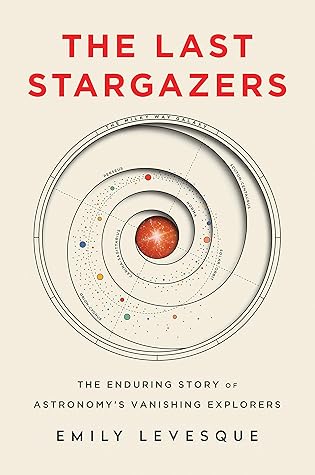More on this book
Community
Kindle Notes & Highlights
Read between
February 22 - February 24, 2021
My family met my declaration that I was going to study physics and become a professional astronomer with an attitude I can best describe as supportive trepidation. Lots of “That’s awesome! You go for it! Exactly what kind of job will you get with that?”
The buildings will also occasionally fight back. One telescope in Arizona features an unusual design for its dome: rather than turning the telescope inside the building and then spinning the upper portion of the dome to match, at this observatory, the entire building will actually turn whenever it’s time to point at a new object in the sky. Tellingly, there’s also a clear white circle painted around the outside of the building and a sign warning visitors not to park any closer. The circle demarks the path traced out by the building’s protruding stairs as it spins, and for good reason;
...more
Observatories present an interesting conundrum: they’re sophisticated and high-tech hubs of scientific activity, some of the largest and best-engineered facilities in the universe. At the same time, they also work best when marooned in the middle of nowhere. By necessity, telescopes and the people who work at them can be subjected to some brutal extremes of the elements. Sarah Tuttle, an astronomer whose research includes building telescope instruments, summed it up well: “We take these high-precision scientific instruments and then just torture them.”
Howard Bond recalled an evening spent at Cerro Tololo with a viscacha calmly settled just below him, sitting and watching the sunset together until it got dark. As he described it, “Here are these two critters in this vast universe watching this celestial show…this show that may have nothing to do with us…but there it is.”7 From a cosmic perspective, astronomer and viscacha alike are small living things, perched on a mountain, watching our home planet turn.
Edward liked this
The VLA has a “snowdump” command for controllers that simultaneously tilts all twenty-seven dishes down to their lowest limits to physically dump the snow out of the bowl, spins the dishes into the wind to blow the snow out, and points them at the sun to melt any ice. Other radio telescopes take the considerably lower-tech approach of what several colleagues described as the “grad student with a broom” method.
I was in the cockpit of a flying NASA observatory, speeding south through the Antarctic stratosphere. The aurora were arcing and dancing around us. In the back of the plane, a telescope was preparing to point at a star of my choosing, gathering data that would help me unravel one of the many mysteries of the universe that I’d dedicated my life to exploring. It briefly occurred to me that the aurora might, possibly, have a slight impact on the quality of the data. At that moment in time—astronomer or not—I couldn’t bring myself to mind.
I pointed at one screen, reading the label on the top. “What’s ‘wave-driven microseismic noise’?” “That’s mainly ocean waves. Crashing against the North American plate. It makes for some pretty steady background noise.” “You’re kidding me.” We were two hundred miles from the ocean.


